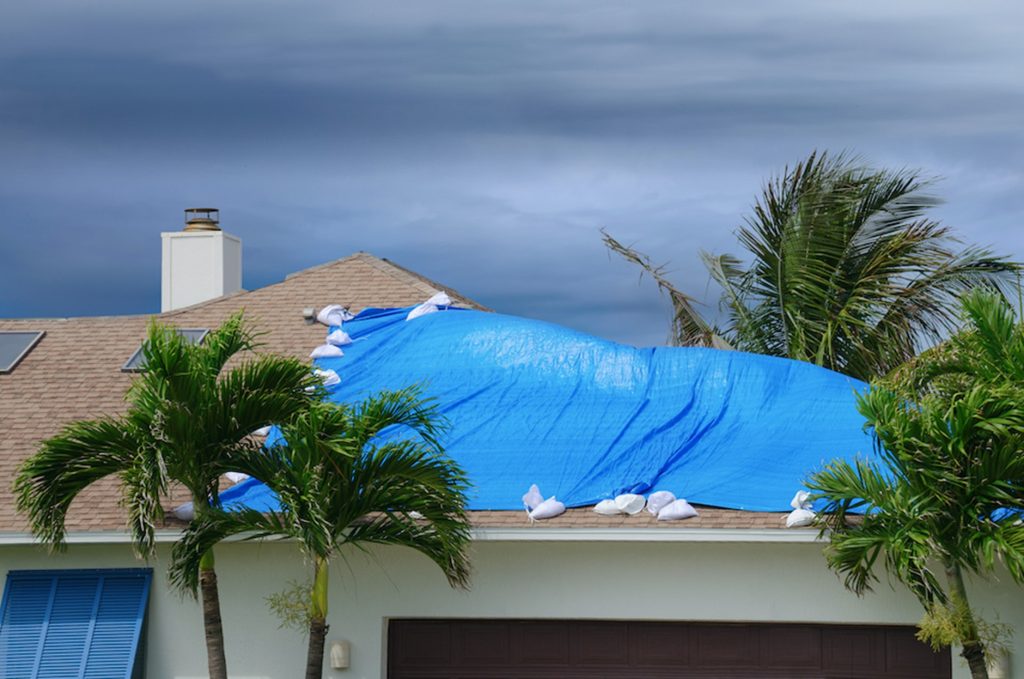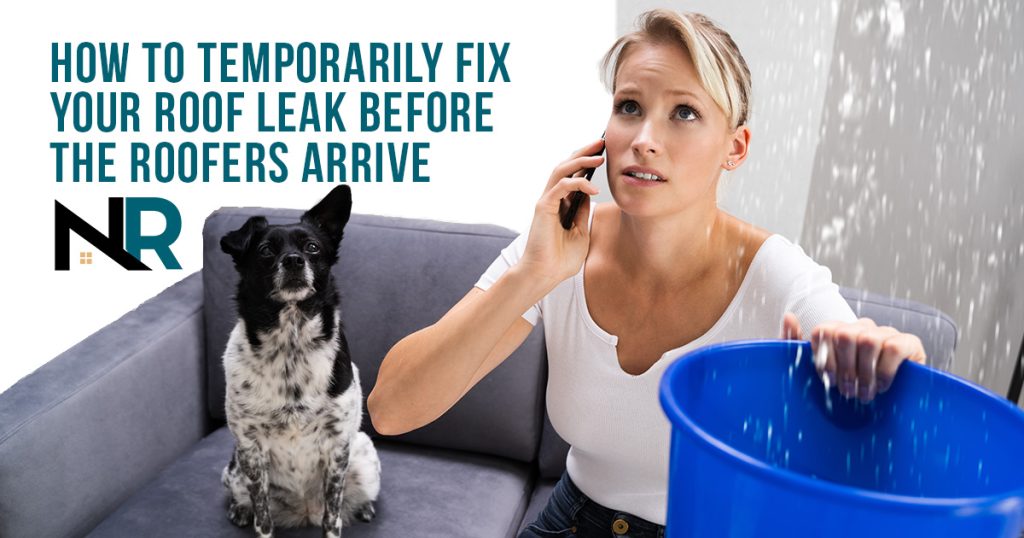As the saying goes when it rains, it pours. And if your roof is leaking in South Florida, you might drown.
Jokes aside, you won’t drown, but your home and valuables may suffer considerable damage if you don’t take immediate action.
At Native Roofing, our priority is to get to your home and access your roof leak situation as soon as we can. But in the meantime, here are some of the things you can do until we arrive.
Please remember that these temporary fixes are just that – temporary. You’ll require a professional roofing contractor like Native Roofing to inspect the damage and provide the correct roofing solution.
Contain the Leak
First, if water is already leaking into your house, you’ll want to contain the leak. This can be easily done with buckets, pots, or large bowls depending on the extent of the damage.
If a storm has revealed a roof leak, after the storm has cleared, check the source of the leak, using any of the solutions we present to you below.
Use Waterproof Tarps
Tarps are an easy, temporary fix for emergency roof leaks. Once you locate where the leak is coming from, use a waterproof tarp to cover it up and you’re good to go.
The tricky thing about tarps though is that you have to make sure it covers the entire leak area and that it’s flat against your roof, so water doesn’t seep in.
Nail down the edges and/or use heavy objects such as 2x4s to keep it secure so it doesn’t blow away and leave your home exposed.

Use Roof Cement, Silicone, and Sealant.
Use of all three depends on if you’re dealing with a dry, wet, and/or small leak situation.
· Roof cement
Roof cement works best in dry conditions. It can be used to patch holes, repair cracks, and handle other emergency repairs. It’s a straightforward procedure. Most roofers will also advise you to cover the cement with a roof mesh to enhance its security.
· Silicone
Silicone is ideal for patching small holes in a leaking roof. As chimneys age and crack, some roofers apply silicone around them to help to stop leaks in these areas.
· Rubber Sealants
If you’re forced to make a temporary fix during wet conditions, then rubber sealants are an effective solution. They can be used under wet and dry conditions as the situation demands.
Reattach or Replace Loose Shingle
Sometimes a loose or broken shingle may be the cause of your roof leak. You can adjust the shingles back into place using roofing nails to cover the exposed area as a temporary solution. Hire a professional, licensed roofing company in your area such as Native Roofing to ascertain the extent of the damage, providing a thorough roof inspection.
While there may be no visible leaks with loose or broken shingles, water may still be slowly penetrating your roof’s cavity. Waiting to call a professional may cost you more hassle and money in the long run.
Patch Your Roof
You may notice the leak is coming from inside your attic. Applying roof tape to this area is a simple and effective way to temporarily slow the leak.
Patching your roof is a great alternative if you aren’t comfortable with heights or able to climb up on your roof. Or, if you don’t have someone to assist with holding the ladder.
Roof tapes are best to use when the area is dry. If wet, the adhesive of the tape may wear out.
Use Roof Flashing to Cover the Leaking Area Temporarily
Roof flashing is a flat, thin piece of metal used to help waterproof your roof’s perimeter and protrusions. Its main purpose is to divert water away from seams and joints and keep it from entering roof openings and cracks.
Professional roofing contractors will usually install flashing when a roof is being built for the first time to guarantee its longevity.
In your case, simply apply caulk (a type of roof sealant) around the leak, tuck the flashing under the row of shingles, and press it against the caulk. This will seal your roof and deter leaks.
Contact Native Roofing for a Permanent Fix
It’s important that you first check the source of a leak. Sometimes what might appear to be a roof leak might be a leaking pipe that requires you to call a plumber instead.
No matter the source, just remember that the solutions we’ve provided you with today are only band-aids for a professional’s help.
Again, you’ll require a professional roofing contractor like Native Roofing to inspect the damage and provide the correct roofing solution.
At Native Roofing, we’re South Florida roofing experts in the areas of roof maintenance, roof repairs, and roof inspections. With 35 years of experience, we serve the people of South Florida and strive for 100% satisfaction every time.
No matter your roofing needs, we’re confident we can help you solve them. To discover more about our company, reach out to us here.


